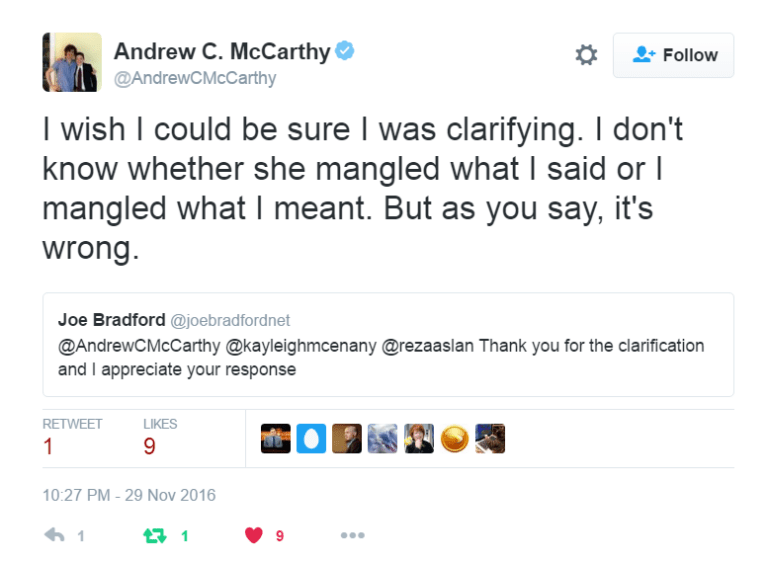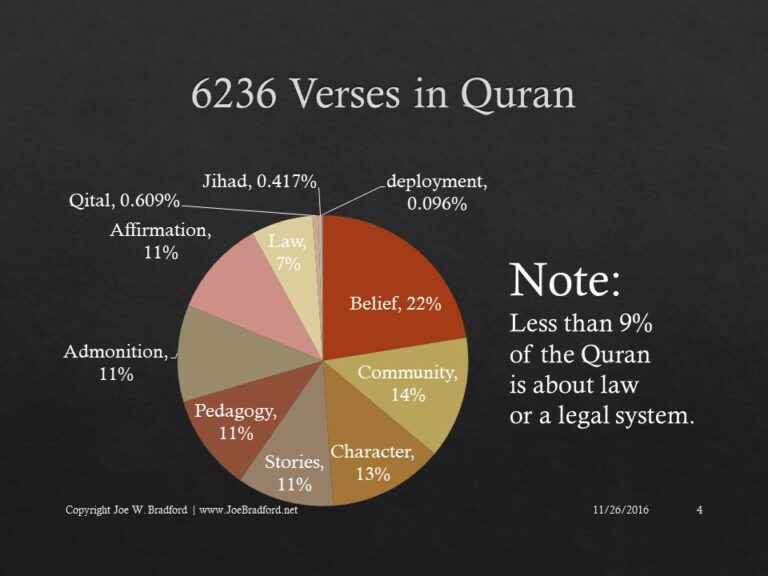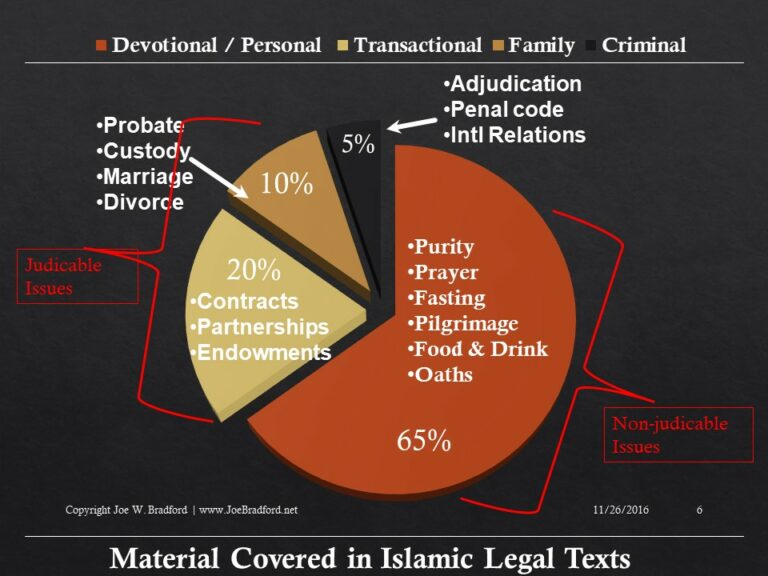In a recent CNN interview on Nov 18th, 2016 Kayleigh McEnany, Trump surrogate and political commentator, quoted Andrew McCarthy (a National Review columnist) as an “Academic” source for her statement “…that 90% of the Quran is a legal document and is Shariah.”
You can view her statement here at the 39 second mark:
1st: Andy McCarthy is not an academic source
Andy McCarthy is former prosecutor and has no academic study of Islam under his belt. In fact when I tagged Andy McCarthy in a tweet about the topic, he had this to say:
“I wish I could be sure I was clarifying. I don’t know whether she mangled what I said or I mangled what I meant. But as you say, it’s wrong.”:

2nd: The Numbers Don’t Lie.
Look at these two slides from a recent lecture I gave on Case studies in Islamic law.
Out of the 6236 verses of the Quran, less than 9% are about law or legal issues.
When analyzing a typical work of Islamic “law”, we can see that 65% of it is not even “law,” instead it is personal custom and devotion.

If we took the 35% of Islamic legal compendiums dealing with contracts, family law, and state power as a derived from the Quran, that would be only 2.45% of the Quran.

Only 5% of those works deals with issues of state power, which if one claimed was being drawn from the Quran directly would account for only 0.35% of the verses of the Quran.
So no, 90% of the Quran is not about law. Don’t fall for the propaganda.
Addendum: These charts were created after analyzing the number of verses on law, approximated by most classical scholars to be 500 in number, then comparing those on a granular basis to the overall number of verse 6236. I used the terms Jihad and Qital in their original Arabic to differentiate between the two and their connotations in different contexts, as well as the tendency of some translators to render them into English with the same meaning. Deployment is the word Nafeer in Arabic, meaning the deployment of troops by a sovereign ruler. Because this Arabic term is ambigious to most, I opted to translate it. The percentages for the categories used, other than law and related topics, are approximations due to the overlap in topics. The categories themselves are taken from Ibn Ashour’s introduction to his al-Tahrir wal-Tanweer, an extensive exegesis of the Quran. The categories used in the second slide are found in almost every standard work of Islamic law (fiqh) and the percentages here are approximations based on chapter length and topical coverage in those works as a whole.
I plan to release more detailed coverage of the methodology used in these pie charts at a later date.





